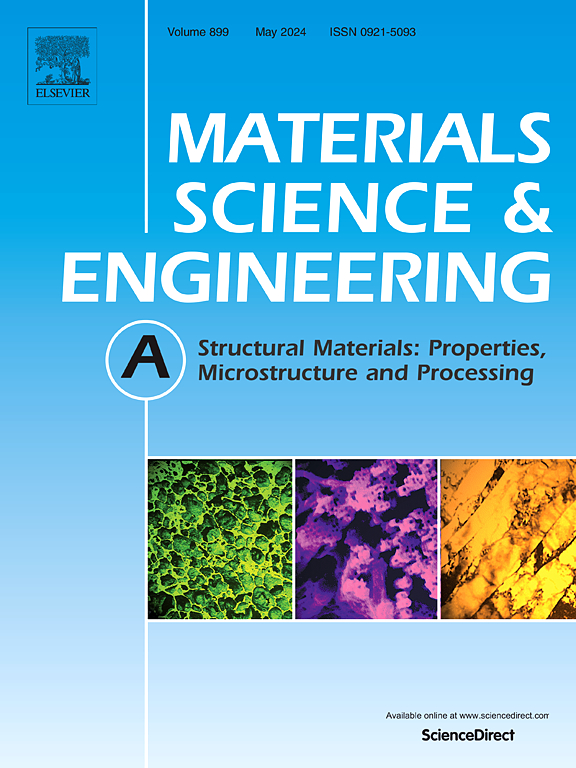Comparison of gaseous hydrogen effects in 1200 MPa high strength martensitic and pearlitic steels
IF 6.1
2区 材料科学
Q1 MATERIALS SCIENCE, MULTIDISCIPLINARY
引用次数: 0
Abstract
This study compares gaseous hydrogen effects in a high strength martensitic and pearlitic steel (ultimate tensile strength of 1200–1300 MPa). When tensile tested in 10 MPa gaseous hydrogen at room temperature, the relative reduction of area (RRA) is 14 % for the martensitic steel while the pearlitic steel shows much improved behaviour with an RRA of 75 %. The microstructures of both steels are characterized in detail pre- and post-mortem. Fractography reveals that hydrogen assisted fracture occurs predominantly along prior austenite grain boundaries for the martensitic steel while tearing topography surface characteristics are observed for the pearlitic steel. Thermal desorption spectroscopy measurements show similar total hydrogen contents of about 2 wppm in both microstructures. In the martensitic microstructure, hydrogen is weakly trapped, whereas in the pearlitic microstructure, about 30 % of the hydrogen is strongly trapped. This seems to be one important reason for the higher RRA of the pearlitic microstructure in 10 MPa gaseous hydrogen.
求助全文
约1分钟内获得全文
求助全文
来源期刊

Materials Science and Engineering: A
工程技术-材料科学:综合
CiteScore
11.50
自引率
15.60%
发文量
1811
审稿时长
31 days
期刊介绍:
Materials Science and Engineering A provides an international medium for the publication of theoretical and experimental studies related to the load-bearing capacity of materials as influenced by their basic properties, processing history, microstructure and operating environment. Appropriate submissions to Materials Science and Engineering A should include scientific and/or engineering factors which affect the microstructure - strength relationships of materials and report the changes to mechanical behavior.
 求助内容:
求助内容: 应助结果提醒方式:
应助结果提醒方式:


